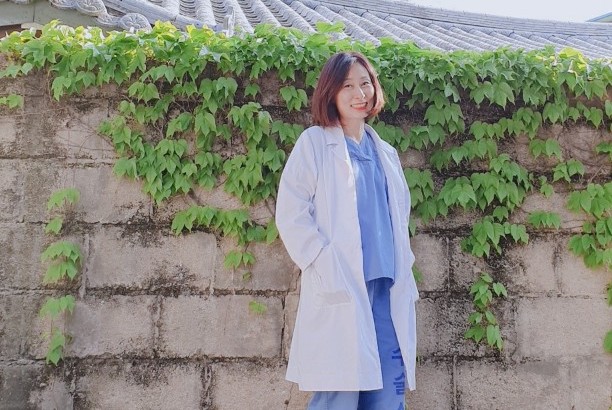A veteran nurse who fought with COVID-19 at the frontline got diagnosed with the virus.
By Soweon Park in Seoul
Kang-Jung-hwa, who has been working as a nurse for 20 years in Jeonju, South Korea, volunteered to serve COVID-19 patients in Daegu, a city which was hit hard by the pandemic in February.
“Empty streets and people were in panic. It made me feel like I am in a zombie movie,” says Kang, recalling the first impression of the city when she arrived on March 2, 2020.
On February 28, 2020, the daily confirmed cases of COVID-19 in South Korea reached the peak at 909 patients. On the same day, Daegu, a city which is 230 kilometres from Seoul, reported 741 cases in the first wave of COVID-19 in the country.
Kang’s family was reluctant to let her go to Daegu fearing she might be infected by the deadly virus. But Kang insisted.
“I wanted to make my part of contribution with my medical knowledge and experience for the people, not as someone’s mum or wife but just myself,” Kang adds.
Kang resigned from her job on February 28, 2020 and went to Daegu. She could not be absent from the hospital which she used to work for in Jeonju for a long time. Also, she did not know when she would be back.
“My family and friends were worried about me, as I quit my job and went to do volunteer work. But I didn’t think that I was quitting my job, rather, I thought that I just worked for another hospital in Daegu. Also I have a belief that I can work at any hospital,” Kang says.
Serving COVID-19 Patients
Kang worked in a ward for COVID-19 patients at Yeungnam University Medical Center, which was the frontline of the battle against the pandemic.
The government recommended medical professionals to do volunteer work for four weeks, considering the fatigue and possibility of infection. But Kang stayed in Daegu for six weeks starting from March 2 to April 15, 2020.
“As soon as I arrived in the medical centre, I had a two-hour orientation tour and then I was led to a ward,” she says. The volunteer nurse was assigned to work for three two-hour shifts.
“Since it was too hard to work for long hours in full heavy protective gear, we took a two-hour break after working for two hours,” Kang says.
Kang says every medical worker had to wear personal protective equipment (PPE) from head to toe. With safety goggles and overshoes, the heavy protective gear is quite suffocating.

“It feels like taking a sweat shower inside the protective clothing, and the pressure of goggles really hurts. I struggled with sore oozing from my nose bridge and ears,” Kang says.
Working at the frontline and taking care of the patients can be psychologically demanding to medical workers. “The ward I worked for was a place of life and death. I witnessed patients whose family couldn’t take care of them dying alone in a ward,” she says.
“Some patients who could not accept that they were diagnosed with COVID-19 were so mad that they spat at me. It was hard to make them understand and accept the situation,” she adds.

The Nurse Became a Patient
“In the fourth week of volunteering, most patients were close to full recovery and some were discharged from the hospital,” Kang recalls.
On April 15 when the daily confirmed cases of COVID-19 dropped to one, Kang decided to go back to home.
After the six-week volunteer work, she had to undergo two weeks of self-monitoring in a hotel in Daegu.
“I wished it were a dream. I was getting ready to go back home but just sent to the hospital instead.”
On April 28, a day before she was supposed to return home and meet her family, she was diagnosed with COVID-19. “I wished it were a dream. I was getting ready to go back home but just sent to the hospital instead,” Kang says.
She did not have any symptoms of COVID-19, so the diagnosis was a shock to her. “I still don’t know how I got infected,” she says.
After she became a patient, she suffered from depression and panic disorder.
“I couldn’t sleep and eat well. During the 31-day of treatment, I realised how sad, lonely and frustrated the patients I helped were,” Kang says.
Trace Left by COVID-19
Although Kang is now completely cured, she is still suffering from after effects of COVID-19.
“I lost my sense of smell. It’s getting better, but I sometimes still burn my rice. And also, I have muscle pain, particularly my legs,” she says.
Kang used to go hiking on weekends, but she cannot do long walk now.
Having experienced a dramatic change from being a nurse to a patient, Kang urges people not to blame the COVID-19 patients and survivors. “No one wants to be infected. Anyone can be infected, just like I was. We think ill of COVID-19 patients, but they are all infected by someone,” she says.
Edited by Lasley Lui & Regina Chen







































